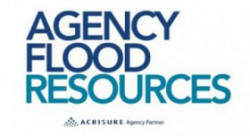As a powerful winter storm aims at the Northeast this weekend, forecasters predict severe coastal flooding is likely to be among the worst on record along the Jersey Shore. According to the Coastal Flood Watch Warning issued by the National Weather Service (NWS) earlier this morning, “the storm system is expected to bring strong onshore winds to the coasts of Delaware and New Jersey from Friday night into Saturday night, and the coastal flooding could last for three consecutive high tide cycles with water remaining trapped along the coast, and in the back bays and estuaries.”
Wave heights of as much as 20 feet are expected on the near-shore waters off New Jersey and Delaware over the weekend, ranking among the highest on record. That, combined with a full moon high tide and northeast winds that may gust to as much as 60 mph driving water onshore, could result in major flooding, causing significant property damage and beach erosion. A storm surge of as much as 5 feet on top of the high tide is expected as well.
In addition to those located on the shore and the eastern side of the bay, Agency Flood Resources encourages all those located along the western edges of the bays to stay alert as well, and make all possible preparations in an attempt to minimize the impact of flooding on their homes and business:
- Take all necessary steps to prevent the release of dangerous chemicals that may be stored on the property; locate gas mains and electrical shut-offs and anchor fuel tanks.
- Ensure that important document files are backed up away from your property so they aren’t lost if electronics and paper files are destroyed by water.
- Review your disaster response and recovery plan with your staff and/or family members.
- Contact your property insurance agent.
Agency Flood Resources has substantial expertise assessing, insuring and mitigating flood risk, therefore please feel free to contact us with any questions you may have and to learn how we may be able to improve how you insure your client’s flood risk.








